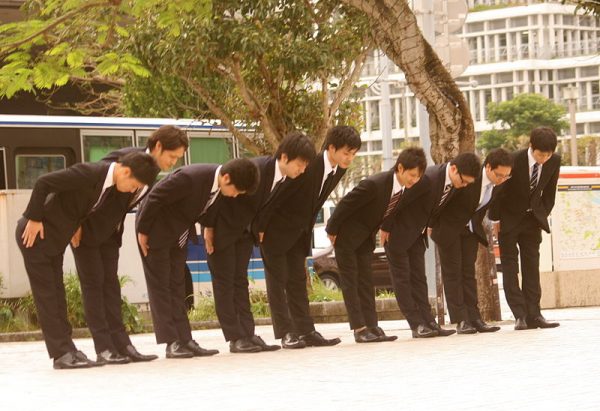Bowing is a well-known form of Japanese etiquette and deeply ingrained in Japanese culture. The Japanese believe the head is the most important part of the body, and by bowing, they are showing their respect. Although bowing may seem pretty straightforward, it’s actually quite complicated, with everything from the depth of the bow to its duration dependant upon the people involved and their status in relation to each other. Today, bowing serves a variety of functions. Bowing is used to say hello or goodbye. You can also bow to convey different emotions such as appreciation, respect or remorsefulness. When traveling to Japan you will see bowing frequently but knowing when to bow can seem daunting for a first time visitor. As a foreigner, you are not expected to know the rules and nuances of bowing. A few helpful guidelines you can learn basic bowing etiquette while traveling in Japan.
The proper form for the bow is to bend from the waist, keeping a straight back and arms held stiffly to the side of the body. A simple nod of the head is sufficient for foreigners but if you would like to practice bowing a good rule of thumb is that when someone’s bows to you, bow back. This excludes the people who greet you in shops or restaurants. As a customer, you will not be expected to bow back. When in doubt, bow to 15° (eshaku bow). This is a semi-formal bow used for greeting when meeting people for the first time. Don’t bow while speaking or walking.
Japanese who have traveled abroad or have experience dealing with foreigners may extend their hand for a handshake, though they probably won’t be able to stop from giving a slight bow at the same time as well.





